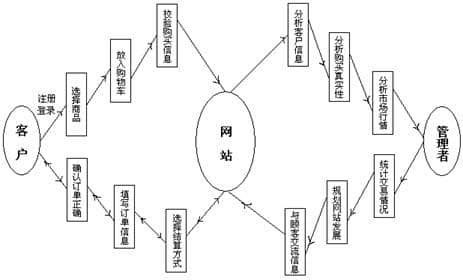A successful enterprise website must be able to perfectly combine the business needs of enterprises, network technology and the art design of web pages. Therefore, enterprises Website construction It requires not only software developers who are familiar with computer technology and network technology, but also enterprise business personnel and professional art designers to participate. In order to establish a website, enterprises must make a good plan, that is, make an overall design of the website construction, including the positioning of website service objects and objectives, business model, website content design, selection of development tools, budget and schedule.
(1) Purpose of website establishment: This is the core issue of website planning. However, many enterprises ignore this point and only build websites for the purpose of building websites, which can have many purposes. For example, publishing information, online transactions, information intermediaries, enterprises must comprehensively consider their own business scope, development planning, capital status, technical level and other factors to determine the purpose of establishing a website in order to provide help for the operation and management of enterprises.
(2) Determine the service target of the website: after determining the purpose and service field of the website, it is necessary to consider the target market orientation of the website, such as the customer's occupation, age, gender, region, cultural level, etc. The Internet eliminates time and geographical restrictions. Faced with such a large user group, enterprises must make appropriate choices to highlight the characteristics of the website, and define the service objects to facilitate the promotion and publicity of the website. Many websites are quickly forgotten by users and submerged in the sea of websites because they do not provide special services for certain customer groups and lack stable customer groups.
(3) Planning website content: after determining the service object of the website. We should start to plan the specific content of the website, set up the website's sections and columns, and then collect and organize various relevant materials around the theme of the website to strive for rich content, distinctive features and focus on the theme. Generally speaking, websites can be divided into information websites, business websites, service websites and comprehensive websites. Different types of websites provide different sections and columns. Information websites usually have columns such as enterprise profile, product introduction, service content and contact information. Business websites usually have online ordering, online payment, service methods and other columns, service websites usually have various consultation, information search, member registration and other columns, and comprehensive websites carry out a variety of businesses including the above businesses.
(4) Website technical solution: Determine the technical solution of the website according to the purpose and function of the website, including whether to build the website or purchase the overall network service, use WindowsNT/2000, Linux or Unix operating system, choose the system solution, use the e-commerce solution provided by HP, IBM and other professional companies, or develop it by yourself, Determine website security measures to prevent hackers and viruses from attacking. Development of relevant software such as ASP, CGI, JSP, etc.
(5) Website budget: website construction is also subject to financial constraints. In a sense, the cost of website construction is not only the most concerned issue of enterprises, but also one of the key factors related to the success or failure of websites. Therefore, before the construction of the website, a detailed list of all construction costs should be made according to the financial situation of the enterprise and the development cycle of the website, including market research fees, domain name registration fees, software and hardware purchase fees, as well as website development, publicity, maintenance and update fees.
(6) Submit website planning report: finally, sort out all the contents of the website planning and write a detailed website planning report, submit it to the decision-making level of the enterprise for discussion, and organize the implementation after it is approved.


